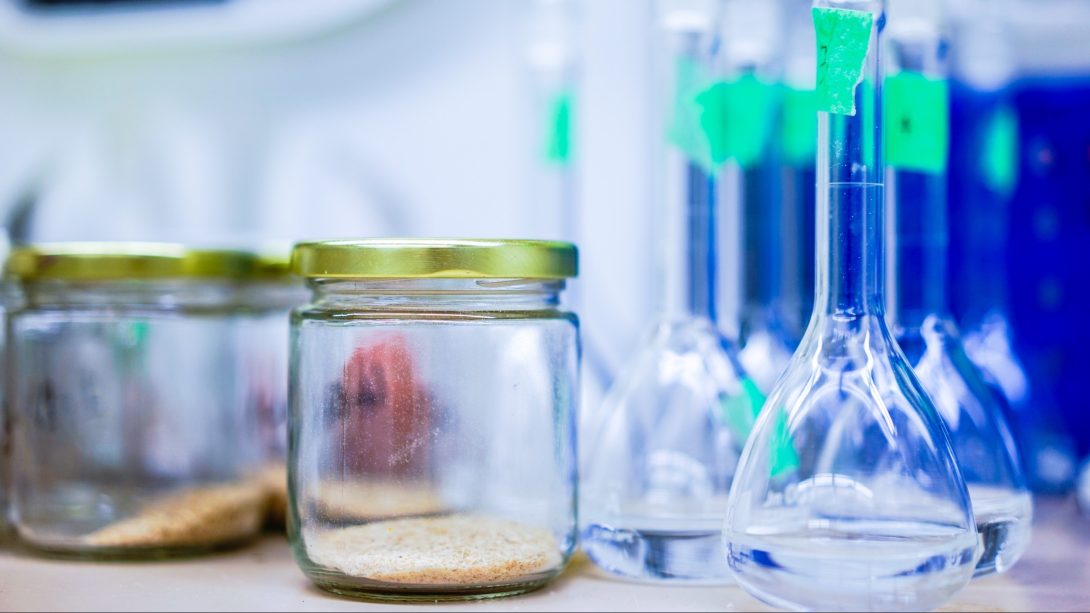Biopolymers/Biomaterials and Biomaterial Characterization Heading link

Traditional oil-based materials often incorporate toxic chemicals to gain additional properties such as resistance to UV or resistance to high temperature. This research will provide insight into how lignin, a naturally occurring substance in plants, can be used to create new biomaterials that can compete with traditional plastics generally used today. Improving biopolymers with lignin may produce new biomaterials that can have the same or better performance compared to traditional oil-based materials.
Traditional plastics have certain properties people nowadays are used to. For example, everyone expects their plastic wrap to keep their food fresh by preventing oxygen permeability. In order to investigate whether our experimental biomaterials are a viable replacement for traditional oil-based materials, certain expected abilities must be evaluated. Evermore, incorporating lignin into biopolymers can produce biomaterials capable of exceeding the properties of traditional oil-based materials that may often contain toxic and environmentally harmful additives.
Lignin Depolymerization Heading link

Lignin can be depolymerized to produce many useful products. The process of lignin depolymerization is usually energy-intensive, as a successful reaction’s conditions are usually harsh and require high temperatures. This study aims to test the effectiveness of specific Ionic Liquids as solvents and catalysts on the depolymerization of Lignin at room temperature which in turn would decrease the costs of the process. A mixture of selected solvent and catalyst will be prepared to dissolve the subject lignin.
Biomass Pretreatment Heading link

Research focuses on biomass pretreatment which breaks the plants cell wall exposing cellulose, hemicellulose and lignin. Enzymatic hydrolysis then uses enzymes to break bonds into simple sugars. The overall goal, of my research is to create a bioplastic that can be used as an alternative to traditional plastics and must be of equal strength for use, low cost to produce, and easy to degrade.
Biodegradation Heading link

Bioplastics production is on the rise as the push for more sustainable products continues to grow. However, even though they are marketed as biodegradable or compostable, in reality not all bioplastics are biodegradable or easily compostable. Studying the biodegradation of bioplastics is imperative as society moves towards a more sustainable future. Researching the biodegradation of experimental and commercial bioplastics will not only allow for the development of non-toxic bio-based plastics that biodegrade quickly but for the development of possible solutions for global plastic pollution.
Lignin Characterization Heading link
The purpose of my work in Dr. Achinivu’s Lab is to study different structures of lignin that are found in biomasses. Since each species of biomass grows in a different environment, each species will have a unique lignin structure that is most suitable for its environment. Understanding lignin structure is critical because it can allow for more efficient lignin valorization in the near future. In further detail, lignin is a complex compound that is made up of 3 basic monomers, H, G, and S. Each of these units consists of a 3 carbon chain attached to an aromatic ring which has some covalent bonding. The 3 monomer units differ in the number of covalent bonding in the aromatic ring, H has one C-O bond, G has 2 C-O bonds, and S has 3 C-O bonds. The greater the number of covalent bonds in a compound, the tougher it is to break that compound down into smaller pieces. My goal is to study these lignin compounds and find which ones have the lowest S/G ratio. I am able to find the concentration of each type of monomer in lignin by using the following instruments: NMR, FTIR, GPC, UV VIS, SEM/TEM, PXRD, and GC-MS. Overall, the understanding gained from this work will make it more clear which lignin compounds have the greatest potential to be fully optimized.